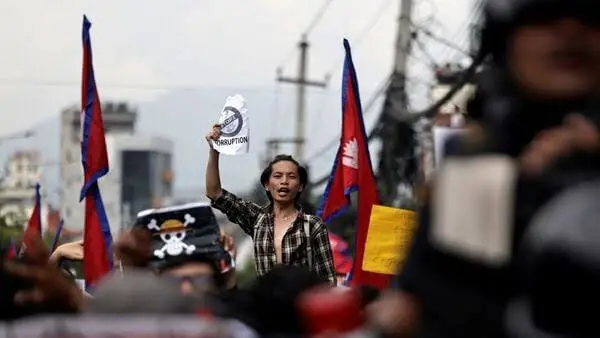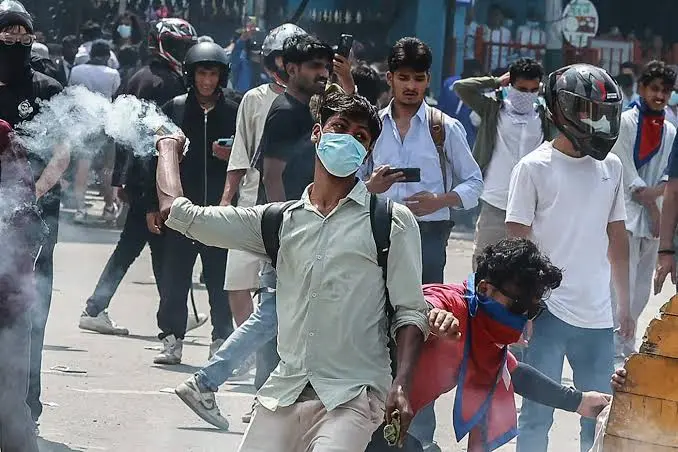September 10, 2025 | Nepal: The Nepal social media ban has been the talk of the nation and beyond. What started as a sudden government order to block platforms like Facebook, Instagram, YouTube, WhatsApp, and X quickly exploded into one of the most significant youth-led protests Nepal has ever seen. For many young Nepalis, this wasn’t just about losing access to apps; it was about losing their voice. Within hours, the streets filled with chants, posters, and determined faces who refused to be silenced. The Nepal social media ban was meant to tighten regulation, but instead, it lit a spark that spread faster than anyone imagined.
Why the Nepal Social Media Ban Happened?
The government introduced the Nepal social media ban saying it was a necessary step to control misinformation, fake accounts, and hate speech. Only platforms that registered with local authorities could continue, while others were taken offline. Officials insisted this was about safety, structure, and oversight. Apps like TikTok remained available after complying, but the sudden shutdown of global platforms shook daily life. Families couldn’t connect easily with relatives abroad, small businesses relying on social media to promote products saw sales crash, and students lost access to learning communities. The policy was announced with little warning, leaving millions blindsided.

From Silence to Streets
The abrupt nature of the Nepal social media ban sent shockwaves, particularly through Gen Z. For this generation, social media isn’t just entertainment, it’s where they work, network, express creativity, and organize movements. Overnight, they felt cut off from the world and from each other. Protests started small, with a few students holding signs demanding online freedom. But within a day, the demonstrations swelled into massive crowds marching through major cities. Hashtags calling for change spread via SMS and word of mouth, showing that even without social platforms, people found ways to mobilize.
Sadly, things turned violent. Security forces responded with force, leading to clashes that claimed lives. At least 19 young protesters were killed, leaving families heartbroken and the nation in shock. The Nepal social media ban was no longer just a policy issue, it had become a national tragedy.

A Generation That Refuses to Back Down
Even after the government announced it would reverse the Nepal social media ban, the protests didn’t stop. For many, the ban was only the breaking point after years of frustration over corruption, nepotism, and limited opportunities. The youth demanded more than just restored access to apps; they wanted genuine accountability and a promise of change. Their message was clear: blocking platforms may silence voices temporarily, but it cannot silence a generation’s hunger for fairness and equality. The protests forced the resignation of the Prime Minister and sparked a cabinet reshuffle, proving that the power of collective youth voices is stronger than censorship.

The Ban Ends, But the Struggles Remain
When the Nepal social media ban was lifted, officials hoped tensions would calm. But young Nepalis continued to gather, chanting not just for digital freedom but for social justice. Curfews and restrictions followed in many areas, and investigations were promised into the violence that took so many young lives. Compensation was announced for affected families, but many said no amount of money could heal their loss. The protests became a symbol of something much deeper: the fight for a future where opportunities aren’t controlled by the few, but shared by all.

A Defining Moment for Nepal
The Nepal social media ban will be remembered as a turning point. It began as a technical regulation but ended as a historic movement led by a generation that refuses to be ignored. The youth of Nepal showed resilience, courage, and unity in the face of adversity. For them, this is not just about apps, it’s about having a say in how their country is run.
The Nepal social media ban may have ended, but the movement it created is far from over. Young people are standing taller than ever, determined to push for a Nepal that values freedom, transparency, and inclusion. This chapter has shown that even in silence, voices find their way to be heard and once they rise, they cannot be ignored.
Also Read: Team India New Jersey Ahead of Asia Cup 2025








